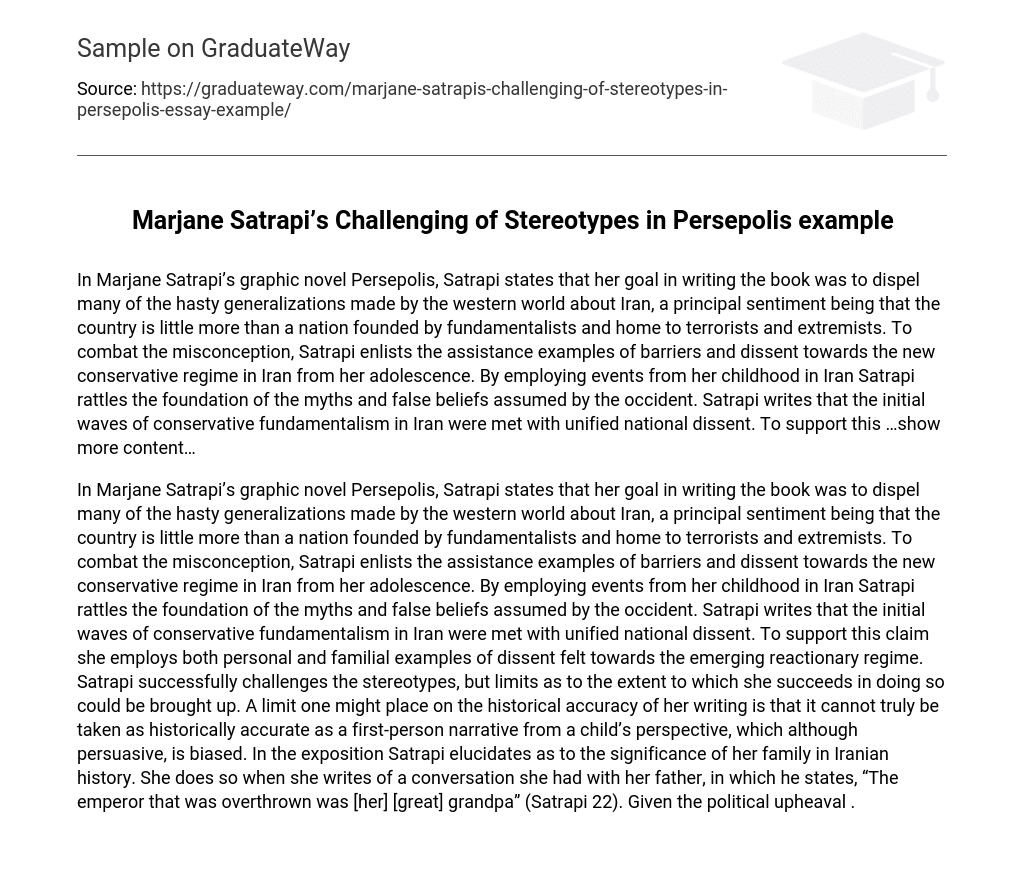In Marjane Satrapi’s graphic novel Persepolis, Satrapi states that her goal in writing the book was to dispel many of the hasty generalizations made by the western world about Iran, a principal sentiment being that the country is little more than a nation founded by fundamentalists and home to terrorists and extremists. To combat the misconception, Satrapi enlists the assistance examples of barriers and dissent towards the new conservative regime in Iran from her adolescence. By employing events from her childhood in Iran Satrapi rattles the foundation of the myths and false beliefs assumed by the occident. Satrapi writes that the initial waves of conservative fundamentalism in Iran were met with unified national dissent. To support this …show more content…
In Marjane Satrapi’s graphic novel Persepolis, Satrapi states that her goal in writing the book was to dispel many of the hasty generalizations made by the western world about Iran, a principal sentiment being that the country is little more than a nation founded by fundamentalists and home to terrorists and extremists. To combat the misconception, Satrapi enlists the assistance examples of barriers and dissent towards the new conservative regime in Iran from her adolescence. By employing events from her childhood in Iran Satrapi rattles the foundation of the myths and false beliefs assumed by the occident. Satrapi writes that the initial waves of conservative fundamentalism in Iran were met with unified national dissent. To support this claim she employs both personal and familial examples of dissent felt towards the emerging reactionary regime. Satrapi successfully challenges the stereotypes, but limits as to the extent to which she succeeds in doing so could be brought up. A limit one might place on the historical accuracy of her writing is that it cannot truly be taken as historically accurate as a first-person narrative from a child’s perspective, which although persuasive, is biased. In the exposition Satrapi elucidates as to the significance of her family in Iranian history. She does so when she writes of a conversation she had with her father, in which he states, “The emperor that was overthrown was [her] [great] grandpa” (Satrapi 22). Given the political upheaval .





